Carl McCunn went into the Alaskan wilderness in March 1981, hoping to spend a few months taking photos, but became stranded and ultimately died by suicide that December.
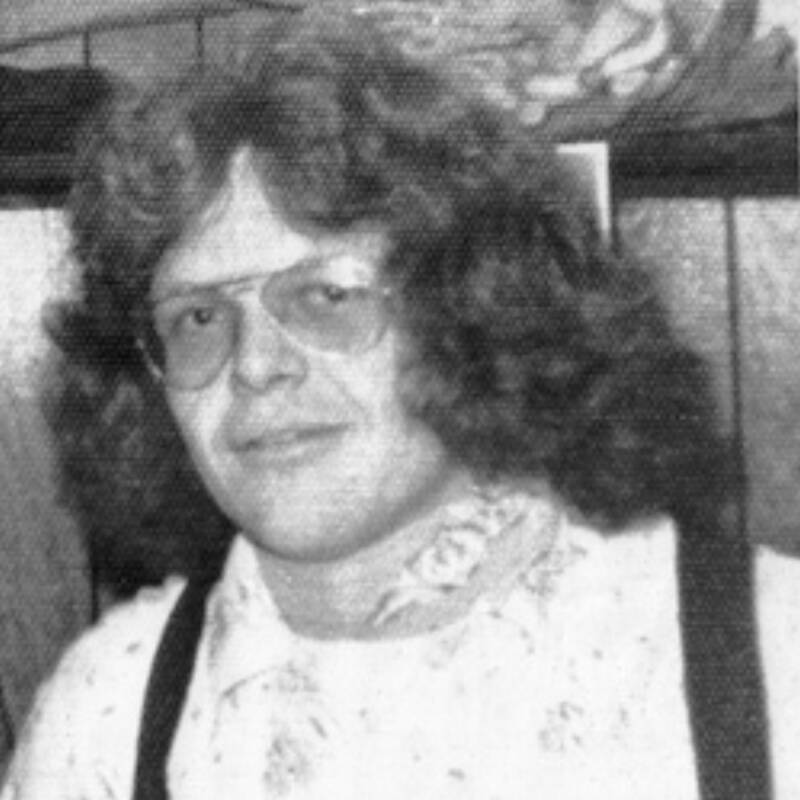
Wikimedia CommonsOne of the last photos ever taken of Carl McCunn.
In 1981, wildlife photographer Carl McCunn embarked on a months-long journey into the Alaskan wilderness. But McCunn never returned home.
He had made only vague plans about his return journey, and there was significant confusion about when and where McCunn was supposed to be retrieved, and by who. In the end, no one came for him. McCunn spent his final months in the wilderness, trying to survive and hoping to be rescued.
Almost a year after McCunn began his trip, state troopers found his body, alongside increasingly desperate journal entries he’d kept during his time in the wilderness. He had died alone, at the age of 35, after deciding to die by suicide instead of starving to death.
This is the story of Carl McCunn — and his tragic demise in the wild.
A Fateful Voyage To Alaska
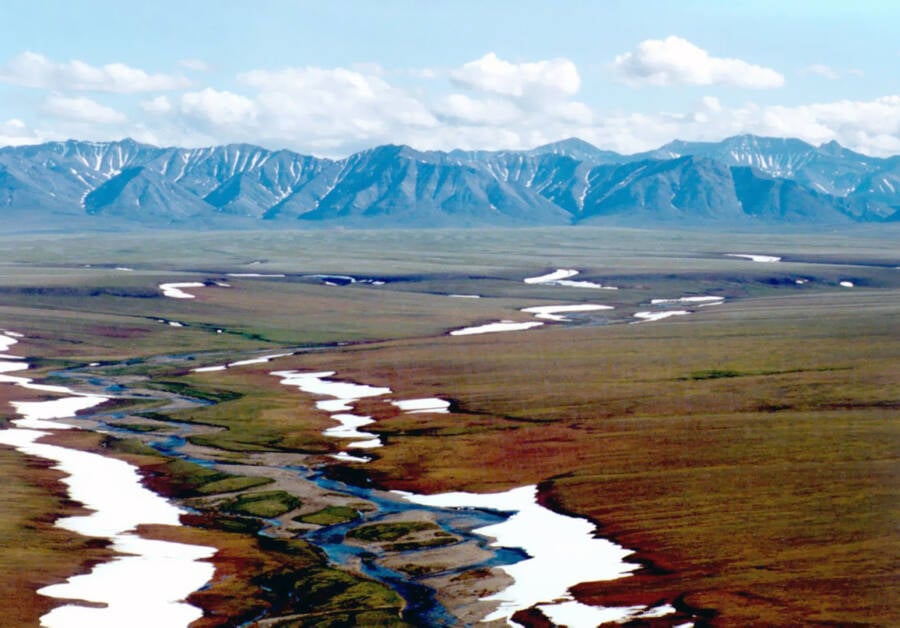
Wikimedia CommonsBefore his 1981 trip, Carl McCunn had spent five months in the Brooks Range in 1976.
Carl McCunn was born on January 25, 1947 in Munich, where his father was serving in the U.S. Navy. However, he spent most of his childhood in San Antonio, Texas. After high school, McCunn attended college for a semester before he followed in his father’s footsteps and enlisted in the U.S. Navy.
After his four-year tour, McCunn worked on a ferry that traveled between Seattle, Washington, and Alaska, and settled in Alaska around 1970.
As such, he was no stranger to the Alaskan wilderness. In 1976 he spent five months in the Brooks Range, a vast, desolate region in the north part of the state. Five years later, McCunn was looking to delve into nature again, and this time he hoped to take photos of wildlife in the region.
So, in March 1981, as winter ceded into spring, he hired a bush pilot to drop him off about 225 miles northeast of Fairbanks along the southern edge of the Brooks Range. McCunn brought with him 500 rolls of film, 1,400 pounds of food, two rifles, and one shotgun. According to The New York Times, McCunn was planning to stay in the wilderness until about mid-August.
Carl McCunn seemingly believed he had made plans to be picked up by a friend of his in August, but apparently he never confirmed these plans. He didn’t realize it, but he was beginning his multi-month stay in the Alaskan wilderness with no guaranteed method of getting out.
Maybe that’s why he disposed of five boxes of shotgun shells into the river, believing they weren’t necessary for his five month trip. He began to occupy himself with the purpose of his expedition instead: photography.
How Carl McCunn Tried To Survive In The Wilderness
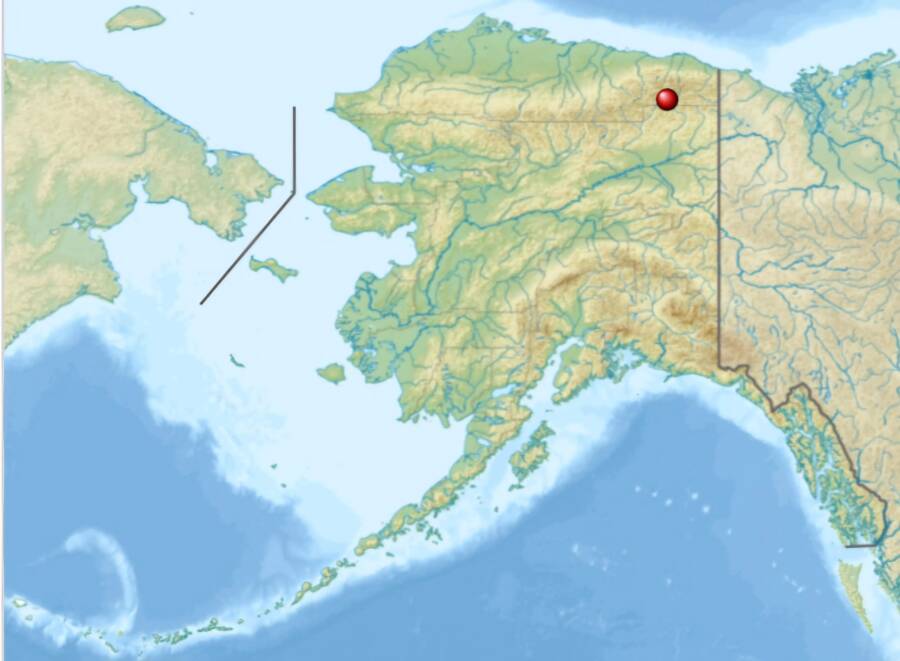
Wikimedia CommonsThe location of Carl McCunn’s campsite.
Though the first few months of Carl McCunn’s trip seemed to go well, he began to worry by August. His supplies, including his provisions, were running low. And McCunn had counted on his friend’s arrival, but the friend had never arrived.
“I think I should have used more foresight about arranging my departure,” McCunn wrote in his journal in early August, one of the last entries with a date. “I’ll soon find out.”
Uncertain when or if his friend would arrive, McCunn relied on his survival instincts. He still had bullets left, and he used some to shoot ducks and muskrats to eat. One day, he got lucky when a caribou died in a nearby lake, and McCunn was able to dry its meat.
All the while, he wondered if his friends and family would send someone to look for him.
“Certainly someone in town should have figured something must be wrong — me not being back by now,” McCunn wrote. “What in the hell do those people think [I] gave them maps [of my camp location] for? Decoration?”
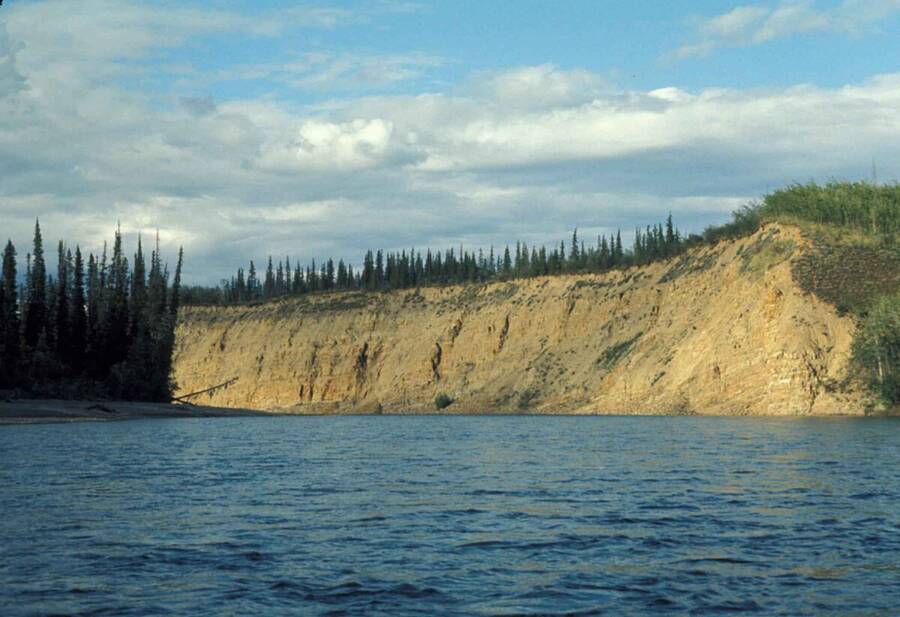
Wikimedia CommonsThe bluffs near Carl McCunn’s campsite.
Back in civilization, his friends were indeed worried about him. That summer, they even asked state troopers if they could send someone to fly over McCunn’s campsite and check in on him.
In response, Trooper David Hamilton flew over Mr. McCunn’s camp — and even spotted Carl McCunn in the wilds below. But Hamilton later testified that he saw McCunn waving a red bag (McCunn’s sleeping bag cover) in a manner Hamilton described as “casual.”
“On the third pass he turned and walked back toward the tent, slowly, casually,” Hamilton recalled. “We surmised there was no immediate danger or need for emergency aid.”
McCunn’s journal revealed the opposite. He was excited to see the plane above him, hoping help had finally arrived. He even tried to signal the aircraft for help. But when the plane left, and McCunn consulted the distress signals printed on the back of his hunting license, he realized that he had made a terrible mistake — and used the wrong signal.
“I recall raising my right hand, shoulder high and shaking my fist on the plane’s second pass. It was a little cheer – like when your team scored a touchdown or something,” McCunn wrote in frustration. “Turns out that’s the signal for ‘ALL O.K. DO NOT WAIT!’ Man, I can’t believe it!”
Over the next several months, the plane did not return.
The Death Of Carl McCunn
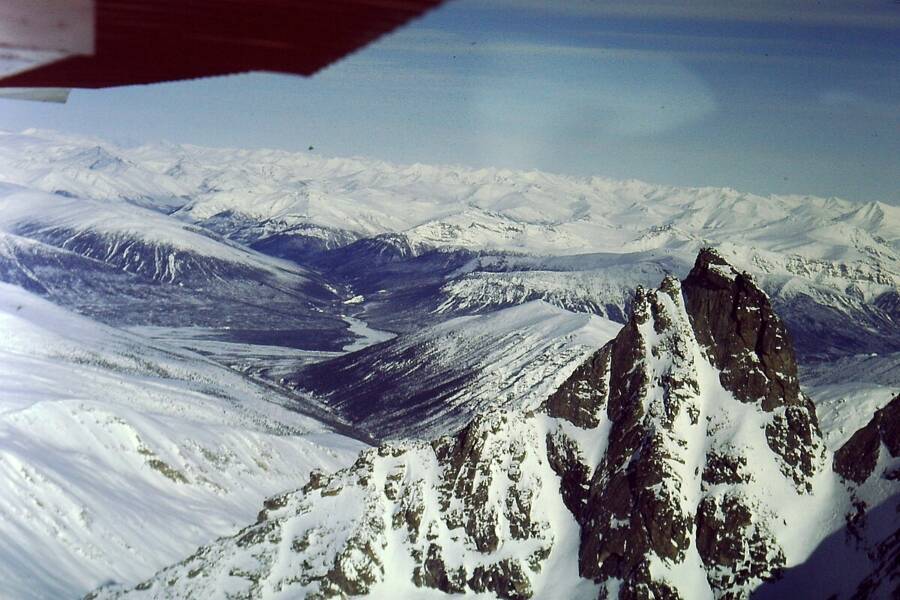
Wikimedia CommonsThe Brooks Range mountains in Alaska.
As summer faded into autumn, the Alaskan wilderness began to get a lot colder. The lake began to freeze over, and McCunn had to compete with wolves and other predators while hunting rabbits.
“It’s been a terrible day for me and I won’t go into it,” McCunn wrote sometime in October. “Hands getting more frostbitten every day. Have only one meal of beans left. Honestly, I’m scared for my life. But I won’t give up.”
By November, McCunn was out of food. He was experiencing dizzy spells and the extreme cold was causing constant chills. Though he’d resisted the idea of suicide, he began to see it as the only option.
“Dear God in Heaven, please forgive me my weakness and my sins,” McCunn wrote. “Please look over my family.”
He instructed whoever found his body to deliver his belongings to his father. His final entry reads, in part: “Am burning the last of my emergency Coleman light and just fed the fire the last of my split wood. When the ashes cool, I’ll be cooling along with them… I (chickened) out once already, but I don’t wanna go through the chills again. They say it doesn’t hurt…”
In December 1981, McCunn shot himself in the head. He had stuck his driver’s license to the note, in the hopes it would help officials identify him.
But it took months for anyone to find his body. It wasn’t until January — prompted again by McCunn’s friends — that state troops went to investigate.
After flying over his campsite on January 26, 1982, state troopers could see no signs of life at the camp in the freezing cold −46 °F weather. In early February, a plane landed at the campsite, and troopers discovered McCunn’s body inside his tent, frozen alongside his journal.
In the end, Carl McCunn’s family hopes that his story can be a warning for others.
“If anything comes of his death, it will be to caution other people not to get in the same circumstances,” Donovan McCunn, McCunn’s father told The San Antonio Light. “If only we can keep one person from going through what that kid went through.”
After reading about the tragic death of Carl McCunn, discover the story of Chris McCandless, the man whose death in the Alaskan wilderness served as the basis for the film “Into The Wild.” Or, look through these incredible survival stories from people who cheated death.





